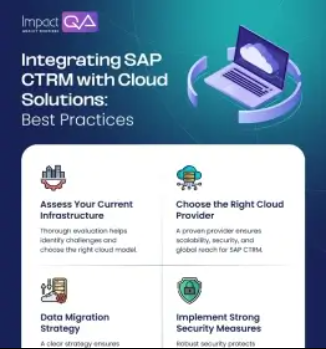Nailing the B2B Post-Purchase Experience With SAP CX
Meet the Authors
Key Takeaways
Adopting an agile, phased approach to technology projects minimizes risk and allows organizations to focus on addressing key customer pain points, leading to increased customer satisfaction.
Measuring customer experience metrics is crucial for validating the success of B2B initiatives; organizations should establish benchmarks and gather direct feedback to align with business KPIs.
Empowering customers through self-service solutions frees up internal resources, enabling employees to concentrate on high-value tasks and strategic business growth.
“I buy from you because I have no other option.” This kind of feedback from a customer can spell a risk of churn waiting to happen in a B2B business. It was this kind of feedback that was an eye-opener for a global company in the wholesale distribution space.
The firm’s customers, which include large OEMs, furniture makers, and big-box retailers, were evolving and sought a seamless, self-service experience similar to what they had in their personal lives. Moreover, the company wanted to free its internal teams to pursue new business instead of spending time on routine queries such as tracking orders or following up on invoices.
To overcome these challenges, the distributor turned to SAP’s B2B Self-Service portal.
Explore related questions
Taking Small Steps
Many ambitious tech projects collapse under their own weight, as a multi-million-dollar, five-year plan often fails to deliver. The company sidestepped this trap by breaking up the overall project into smaller chunks. This approach gave it the agility to enhance its customers’ post-purchase journey and focus on the biggest customer pain points first. Thus, the firm rolled out the project in four phases:
- Greater visibility: The distributor started by giving customers a clear view of their orders online. Customers could now see the status from production to delivery and download documents like invoices and bills of lading on their own time.
- Financial clarity: In the second phase, the company rolled out a module that allowed customers to see open invoices and manage their accounts with ease.
- Smarter inventory: In phase three, it exposed available inventory, creating new sales opportunities and improving its own working capital.
- Frictionless payments: The final piece consisted of enabling online payments. By integrating a secure ACH payment system, the company transitioned customers away from paper checks. This created internal efficiencies and met modern expectations.
The Results
By listening to it customers and delivering value incrementally, the distributor could transform its customer relationships:
- The portal’s Net Promoter Score (NPS) has skyrocketed from around 50% to over 80% after implementing the B2B Self-Service Portal.
- The adoption of online payments is projected to grow by 75% annually.
- The number of internal resources manually touching orders has halved.
This success story proves that the path to an extraordinary post-purchase experience is a series of customer-centric steps instead of one monolithic project.
What This Means for SAPinsiders
Adopt an agile, phased approach to drive adoption and de-risk projects. Instead of trying to build the entire B2B portal at once, identify the most significant customer pain points and solve those first. As the success story of the distributor highlights, by delivering a quick win, an organization can demonstrate value to customers. This builds momentum and encourages adoption. For SAPinsiders, this approach allows the team to get feedback from real users at every stage. It’s less risky financially and allows you to pivot if a feature isn’t landing well. This ensures the final product is exactly what the customers need.
Anchor every decision in measurable customer experience metrics. As more B2B organizations seek to become a vendor of choice, they must measure their progress relentlessly. Thus, an organization must benchmark its current state before it implements a new platform. This approach gives the organization a clear baseline to prove a project’s success. Organizations must also use tools like customer surveys and direct feedback to identify priorities. SAPinsiders can tie their SAP B2B Self Service Portal implementation directly to business KPIs such as customer satisfaction, a reduction in service calls or an increase in online payment adoption.
Focus on freeing up human capital for high-value work. The goal of self-service is to empower the customer and the organization’s employees. By automating routine, low-value tasks like checking order statuses or resending invoices, skilled team members can focus on strategic activities like pursuing new businesses. Thus, SAPinsiders must look beyond simple process efficiency when building a case for a B2B Self Service Portal and also include the value of reallocating the team’s time.







